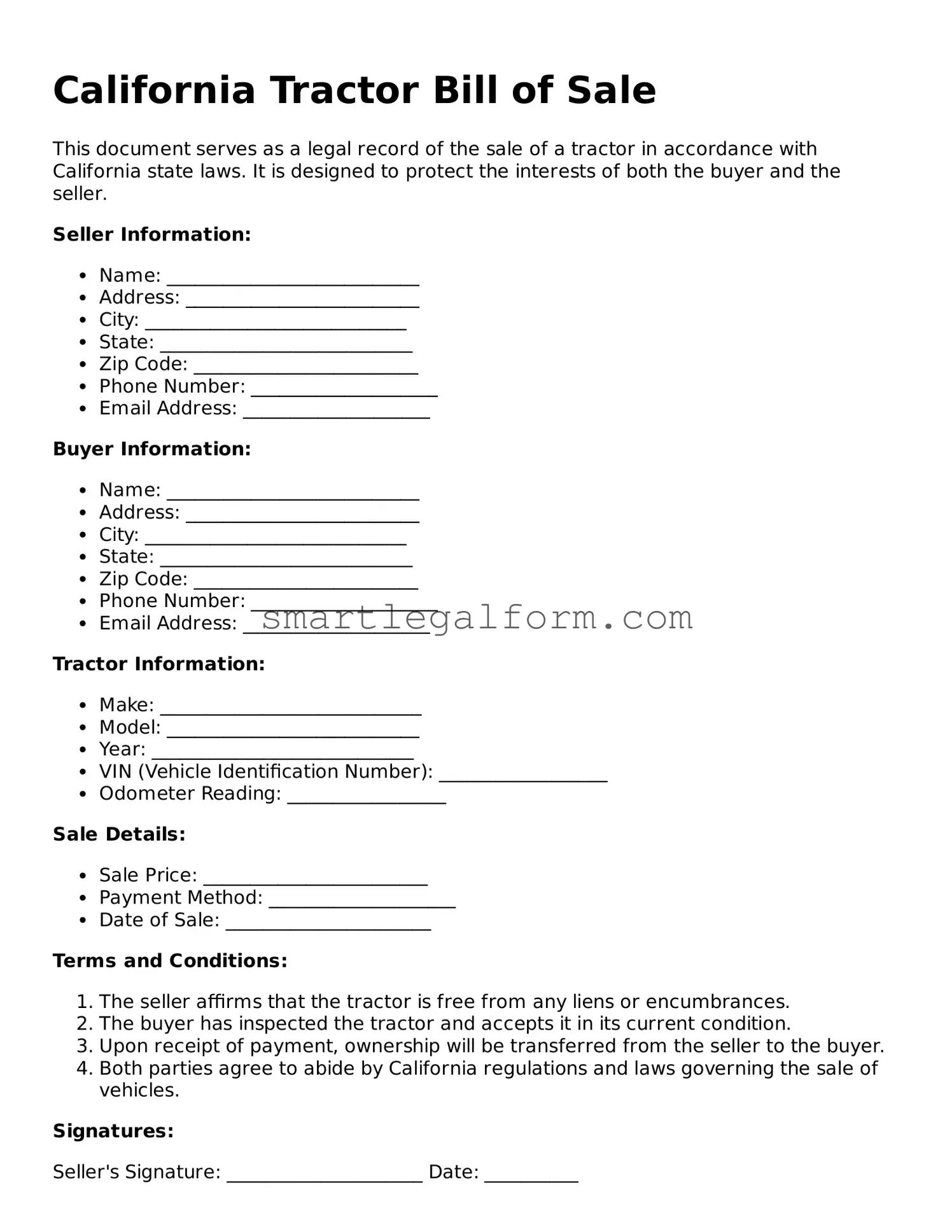Completing the California Tractor Bill of Sale form can be straightforward, but several common mistakes can lead to complications. One frequent error is failing to provide accurate information about the tractor. This includes the Vehicle Identification Number (VIN), make, model, and year. Inaccurate details can result in registration issues or disputes over ownership.
Another mistake involves neglecting to include the sale price. The bill of sale should clearly state the amount for which the tractor was sold. Omitting this information can create confusion and may affect tax obligations. Buyers and sellers need to document the transaction amount to ensure transparency.
People often forget to sign the document. Both the seller and the buyer must sign the bill of sale to validate the transaction. Without these signatures, the document may not be considered legally binding. This step is crucial for protecting both parties' interests.
Some individuals also overlook the date of the transaction. Including the date is essential for record-keeping and can impact the timeline for registration. A missing date can lead to complications if either party needs to reference the sale in the future.
Another common error is not providing complete contact information for both the buyer and seller. This includes full names, addresses, and phone numbers. Incomplete contact details can hinder communication and create difficulties if issues arise after the sale.
Lastly, failing to keep a copy of the completed bill of sale is a mistake that can have lasting consequences. Both parties should retain a copy for their records. This document serves as proof of the transaction and may be needed for future reference, especially during registration or if disputes occur.
